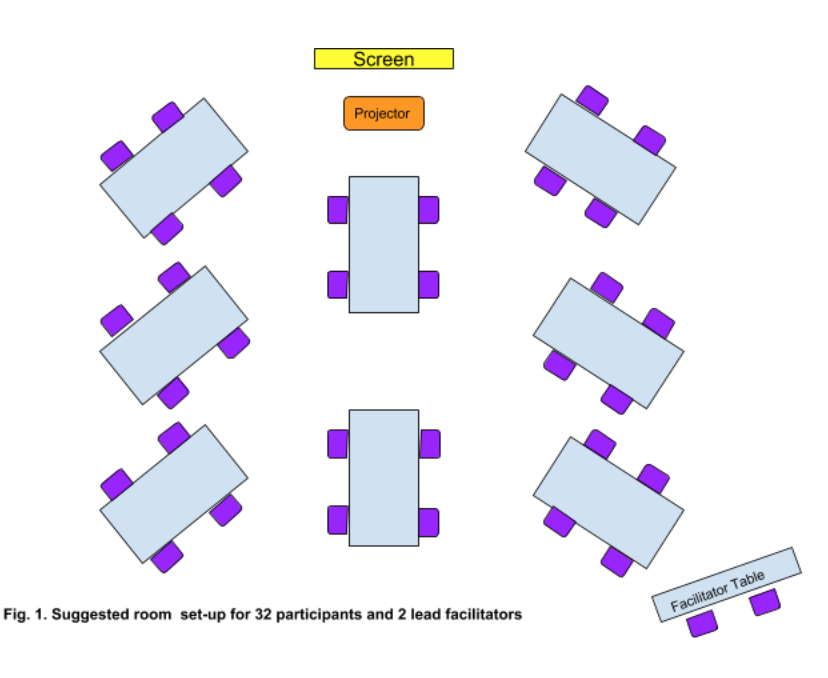In-Person CSP 2021-2022 Workshop #1
A Note About Supplies
Keep in mind, this workshop includes a Variables Explore Model Lesson which requires special supplies. These supplies include:
- Two different colored post-it notes per table
- ~3 snack or sandwich-sized plastic baggies per participant pair
- White board or dry-erase markers for writing on baggies
We also recommend printing out copies of the following resources for participants:
Agenda Walkthrough Resources
Below are a set of resources to help you get a sense of the flow of the workshop and key things to prepare for.
-
Goals and Objectives
This resource provides a high-level overview of the goals for the day and where we meet those goals in individual sessions. -
Equity Content Overview
This resource calls out places in the agenda where facilitators lead discussions and activities that are tied to our equity objectives. -
Essential Content One-pager
This resource points to which lessons are referenced in different points of the workshop.
Printing Agendas
Go to https://curriculum.code.org/plcsp-21/q1/compiled. When you get to that page, right click. From the menu that pops up, click print. From there you should be able to print or save it as a PDF.
For the high level agenda (like one on the right) that is printable, go to:
Google Sheet View of High Level Agenda
Recommended Workshop Timing
This workshop covers content that is scheduled for weeks 8 - 10 (Unit 4) of the year. It should be about 5 - 7 weeks into the school year.
Preparing for Sessions
Review Past Workshop(s)
Review how things went during your previous workshop as co-facilitators.
- Review your feedback from teachers in the Workshop Dashboard to see what needs you can address and how you can continue to improve your local workshops.
- Discuss feedback for each other in how you can better prepare for the workshop together, how you run certain sessions, and other ways you can grow as individuals and a team.
- Make a plan together for actions you are going to take during this workshop to improve.
Supplies
| Provided By Regional Partner | Teachers Should Bring |
|---|---|
| Room set up for table groups of 4-5 teachers Room with reliable Wi-Fi Power Strips Projector Speaker system Pens Chart Paper Medium 3x3 Post-it Notes - 4-5 sets per table in two different colors 8-pack Markers - 1 per table Snack or sandwich-sized baggies - 3 per participant pair Whiteboard markers - 1 per participant Blue Painter's Tape Scissors |
Printed Curriculum Guide Printed AP Course and Exam Description Journal Computers |
Connect with your Regional Partner
Prior to the workshop, find time to meet in person or virtually with both facilitators and the Regional Partner to discuss:
| Subject | Conversation Points |
|---|---|
| Supplies |
|
| Online Workshop Dashboard |
|
| Venue |
|
| Workshop Timeframe |
|
| Food |
|
| Agenda |
|
| Staff |
|
Make a Plan
You should go through every session to make a plan for how you and your co-facilitator will support each other in running the session.
Don't forget to check the pre-survey results to determine what lessons to focus on. The survey gets sent out to teachers automatically 10 days before the workshop. You can view the results on the Workshop Dashboard.
Create Materials For Region
- A copy of the CSP Slides - AYW #1 - 21-22 for the workshop that you have updated according to your needs.
- Set up a section for your workshop participants to join. If everyone is already in a section together from the summer, then you are all set!
The Morning of Your Workshop
Room Setup
Using the supplies provided by the Regional Partner, set up the room. In the agenda, we will call this the "Normal Breakout Room Set Up".

- Tech
- Reliable guest Wi-Fi - check this as early as possible
- Projector with a separate table for the projector
- Speaker system
- 8 Teacher Tables (for 32 teachers) with:
- 4 chairs at each table
- Tables angled toward the projector screen
- Surge protectors in the middle of each table
- 4-5 post-it note pads of at least two different colors
- 3-4 Pens
- Facilitator Table:
- Located in the back of the room
- 2-3 chairs at table (need chairs for lead facilitators)
Create Posters
- Posters up for people to add post-its to as they come in
- Question Parking Lot - For people to put up questions they have.
- “Where are we now?” - On a piece of chart paper or on the board, create a histogram for teachers to add where they are in the curriculum. Remind teachers to take out their Curriculum Guide as a guide to unit progressions.
Concerns?
If you need to raise concerns before or during the workshop that require immediate attention (Internet, health issues, etc.), you should contact your Regional Partner.